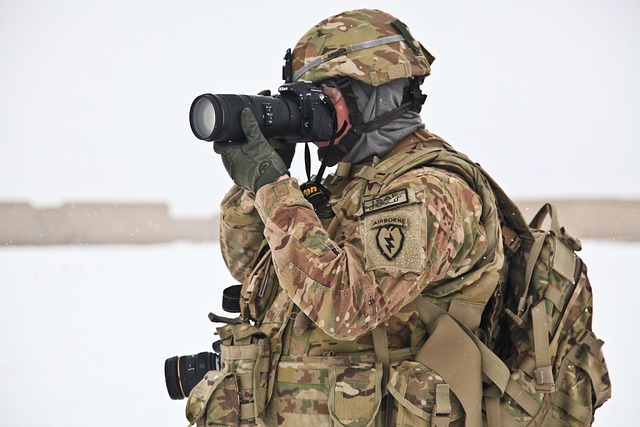The 82nd Airborne Division Flag is a significant symbol of American bravery and tactical prowess, deeply reflecting the values and history of one of the U.S. Army's most decorated units. Originating in World War II and synonymous with rapid global response, this flag embodies the division's motto "All American" and its ethos of precision and valor. It features the U.S. paratrooper insignia against a deep blue backdrop, with the division's name inscribed upon it, serving as a daily reminder of their storied past and inspiring present and future members to uphold their legacy of excellence and bravery. The flag also incorporates elements from the U.S. flag, such as red and white stripes, symbolizing the original 13 colonies' valor and purity, and a blue field with white stars representing vigilance, determination, and justice. Over its history, the 82nd Airborne Division Flag has been present in significant battles including D-Day, Korea, Vietnam, the Balkans, Afghanistan, and Iraq, honoring the sacrifices and achievements of its paratroopers. Today, it stands as an enduring icon that pays tribute to the division's rich history and continues to inspire those who serve in the 82nd Airborne Division with its representation of unity, pride, and commitment to full combat readiness.
The 82nd Airborne Division Flag stands as a potent symbol of American courage and tactical prowess, its iconic Stars and Stripes design resonating with a legacy of valor and precision. This article delves into the rich tapestry of meaning woven into the flag’s elements—each star, stripe, and eagle carries the weight of history and tradition. From its inception to its status as an enduring emblem, the journey of the 82nd Airborne Division Flag is a narrative of American resilience and innovation. Join us as we explore the design’s evolution and the stories it tells, honoring the division’s indomitable spirit.
- The Significance of the 82nd Airborne Division Flag: A Symbol of American Valor and Precision
- Design Elements and Their Militaristic Meaning: A Closer Look at the Stars, Stripes, and Eagle
- Historical Journey of the 82nd Airborne Division Flag: From Concept to Icon
- The Evolution of the 82nd Airborne Division Flag's Design Over Time
The Significance of the 82nd Airborne Division Flag: A Symbol of American Valor and Precision

The 82nd Airborne Division Flag holds a profound significance as an emblem of American valor and precision, encapsulating the spirit and dedication of one of the U.S. Army’s most decorated divisions. This flag, often referred to as “The Ranger Flag,” has its origins in World War II when it was first flown during combat operations. It symbolizes the division’s readiness to respond to global crises, exemplifying the division’s motto, “All American.” The flag is a rectangular banner featuring the U.S. paratrooper shoulder sleeve insignia, centered against a background of deep blue. Encircling the emblem are the words “82nd Airborne,” marking the identity of the division and its elite status within the armed forces. The flag serves as a tangible representation of the division’s commitment to precision in their missions and valor in the face of adversity, each deployment further cementing its legacy. It is a symbol that not only honors the past but also inspires current and future members of the 82nd Airborne Division to uphold the traditions of excellence and courage that it represents.
Design Elements and Their Militaristic Meaning: A Closer Look at the Stars, Stripes, and Eagle

The Stars and Stripes, officially known as the flag of the United States, is a symbol deeply intertwined with the nation’s identity and history. At its core, the design of this emblematic banner holds significant meaning, particularly when considering its application within the context of military units such as the 82nd Airborne Division Flag. The flag comprises thirteen horizontal stripes alternating in red and white, with a blue rectangle in the upper left corner bearing fifty white stars. Each element within this design carries its own militaristic significance.
The red and white stripes symbolize the original 13 colonies’ valor and purity during the American Revolution, respectively. They serve as a testament to the sacrifice and innocence displayed by these founding states in their quest for independence. The blue field in the canton, where the stars are situated, represents vigilance, determination, and justice, qualities essential to military service. The fifty stars represent the states of the Union, with each star signifying a state’s commitment to national defense as exemplified by units like the 82nd Airborne Division. This division’s own flag incorporates this national symbol but often adds distinctive features that honor its specific heritage and mission, such as emblems or insignia that reflect its airborne capabilities and storied history of rapid deployment and engagement in significant global conflicts. The eagle depicted on the national flag is a symbol of strength and freedom, reflecting the nation’s ability to rise above challenges and defend its liberties. It clutches an olive branch in one talon and thirteen arrows in the other, signifying the country’s peaceful intentions balanced with its readiness for conflict. This duality resonates within military units like the 82nd Airborne Division, which uphold both the national ethos and their own proud traditions.
Historical Journey of the 82nd Airborne Division Flag: From Concept to Icon

The 82nd Airborne Division Flag has a storied history that intertwines with the valiant legacy of the U.S. Army’s 82nd Airborne Division. Originating as a symbol of unity and pride within this elite unit, the flag’s conceptual roots take hold during its earliest iterations. The design evolved over time to reflect the division’s motto, “All the way!”—a testament to their commitment to full-scale combat readiness. The flag’s prominent red star against a blue field with white stars and stripes not only serves as a visual representation of the division but also symbolizes the division’s strategic airborne capabilities. Over the years, this emblem has been carried into battle across various conflicts, from the D-Day invasion in World War II to subsequent operations in Korea, Vietnam, the Balkans, Afghanistan, and Iraq. The 82nd Airborne Division Flag has become an enduring icon, embodying the bravery, sacrifices, and achievements of the division’s paratroopers and a reminder of the unit’s rich history and indomitable spirit. It is a symbol that resonates with those who have served and continues to inspire new generations of the 82nd Airborne Division.
The Evolution of the 82nd Airborne Division Flag's Design Over Time

The 82nd Airborne Division Flag has undergone several iterations since its inception, each reflecting the unit’s storied history and evolution. The flag’s original design, adopted upon the division’s activation in 1917, featured a blue field with white stars and stripes. This motif paid homage to the United States flag, emphasizing the unit’s deep connection to American values and heritage. Over the years, the flag experienced subtle changes that aligned it more closely with national standards while retaining its unique identity as a symbol of the 82nd Airborne’s prowess and readiness.
As the division saw action in World War II, the Korean War, and beyond, the design of its flag evolved to incorporate elements that honored the unit’s combat service badge—a paratrooper with wings spread, clutching a dagger. This addition, made official in 1957, underscored the division’s elite status and the airborne nature of its operations. The most recent version of the flag continues to embody the pride and esprit de corps of the 82nd Airborne Division, with its central emblem symbolizing the unit’s commitment to rapid deployment and tactical agility in defense of freedom worldwide. Each evolution of the 82nd Airborne Division Flag has been a testament to the division’s legacy and the ongoing dedication of its soldiers to the nation’s security and values.
The 82nd Airborne Division Flag stands as a resilient emblem of American valor and precision, its stars and stripes woven with the rich tapestry of military history. Each element within its design—from the thirteen stars symbolizing unity across diversity to the stripes representing the values of liberty and justice—offers a glimpse into the division’s ethos and heritage. As we trace the historical trajectory from its initial conception to its status as an icon, it becomes evident that the flag has evolved, yet its core significance remains steadfast. The 82nd Airborne Division Flag not only honors the bravery of those who have served but also serves as an enduring reminder of the commitment to defense and democracy. This article has explored the depth of meaning encapsulated within this symbol, affirming its importance in American military culture and its role as a beacon of the division’s legacy.
